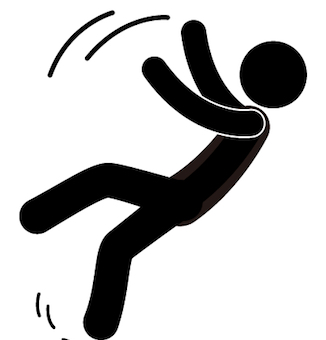Here is a presentation about COGNET: A New ET Research Initiative at UT Southwestern Medical Center.
ET Studies
New Study Finds Overactive Brain Waves Cause Essential Tremor
A recent article in Discover Magazine discusses a recent study which seems to have found the cause of Essential Tremor, overactive brain waves: https://www.discovermagazine.com/mind/new-study-says-essential-tremor-is-caused-by-overactive-brain-waves
Research Study Focus on Improving Treatment of ET with the Use of Mobile Devices
![]()
Five months ago in October New Touch Digital, LLC, a software company with a vision for improving Essential Tremor treatment through technology, came to several Maryland ET support groups to express their research study ideas. By collecting measurable data about ET symptoms on tablets or computer devices, information on a patient’s symptoms could be conveyed to the patient’s neurologist. This data gathering process is understandably important since ET symptoms are not always readily apparent at a short doctor’s office visit. See New Touch Digital’s easy-to-understand description of the research by clicking here. They are about to embark on their study in the D.C. Metro area and plan to select a limited number of participants, therefore the participation inclusion criteria for the study is given below.
ET inclusion criteria and time line
Quality Of Life Research
While anecdotally we may know the quality of our daily lives are affected by our Essential Tremor, what does the clinical research show? Here are links to a few past study articles on just that:
Quality of Life in Essential Tremor Questionnaire (QUEST): Development and initial validation
The psychosocial burden of essential tremor in an outpatient- and a community-based cohort.
The authors of the first study above indicate their goal of developing sound, reliable measures of quality of life for ET patients. Yay!
Both articles have results of study questionnaires where participants self- reported on their symptoms. In the first study participants reported on the negative physical impact of their tremor, the psychological impact, and tremors’ impact on communications, work/finance, and hobbies/leisure. Factors used in the second study were depression, personality traits, psychiatric components, coping strategies and a quality of life health survey.
It is commendable in the first study that the data are specific to the body location of ET symptoms, meaning that voice, head, arm and leg tremor results are included, not just hand tremor. As would be expected of those with voice tremor, the data show the severe impact their condition has on communications. And in the second article, the study authors make note of interesting results that show significant, negative psychosocial impact of ET that is not closely associated with or dependent on the severity of the tremor. This means that even if physical tremor symptoms are not considered severe, they can still have a hefty, negative psychosocial impact.
Overall it appears self-reported questionnaires are developing into something meaningful. The clinical researchers or study authors are hopefully connecting some dots, having learned about the physical, social and neuropsychological components of this condition, and knowing more clearly now how everyday life is impacted for the ET population. Click on the links for more information about the individual studies (but be forewarned it is not easy reading).
NIH ET Trial with Research Doctor from Australia
 I have participated in many ET trials at the National Institute of Health (NIH) located in Bethesda, Md. – just outside Washington. It is an outstanding organization whose work benefits the whole world. As such, NIH brings doctors from all over the world to work there.
I have participated in many ET trials at the National Institute of Health (NIH) located in Bethesda, Md. – just outside Washington. It is an outstanding organization whose work benefits the whole world. As such, NIH brings doctors from all over the world to work there.
I am now participating in a new trial at NIH conducted by Dr. Dietrich Haubenberger. He is great and from Vienna. For this trial, he is being assisted by Dr. Alex Fois of the University of Sydney. My ET is hereditary. My mother had it as did her mother. They were Australian (Perth). I therefore have unknown relatives in Australia who have ET.
We at HopeNET want to be of help to anyone who has ET regardless of where they are in the world or their circumstances. It was a real pleasure spending time with Dr. Fois.
— Peter Muller
Dr Alessandro Fois BSc (Adv; Hons I, Medal) BM BCh (Oxon) MRCP FRACP
Clinical Associate Lecturer, University of Sydney
Movement Disorders Fellow
Department of Neurology – A/B Block Level 1 Westmead Hospital
What does it mean to have a disorder like ET?
 What does it “mean” to have a disorder like ET? It’s not a disease. As you and I know it’s probably more like an umbrella term covering a family of different problems all united by one primary symptom – tremor. How do we gain more knowledge about ET and our own conditions? Having a visible tremor is a “sign” to others that there is something wrong with our brains. What this means to others has a direct bearing on what it means to us. And it’s not easy to communicate what it’s like to have ET to others, including health professionals. So how do we know what is important to communicate?
What does it “mean” to have a disorder like ET? It’s not a disease. As you and I know it’s probably more like an umbrella term covering a family of different problems all united by one primary symptom – tremor. How do we gain more knowledge about ET and our own conditions? Having a visible tremor is a “sign” to others that there is something wrong with our brains. What this means to others has a direct bearing on what it means to us. And it’s not easy to communicate what it’s like to have ET to others, including health professionals. So how do we know what is important to communicate?
New research comes out, and it’s hard not to personalize it and assume that whatever it says applies to me or to be upset that it clearly doesn’t apply to me! There are many studies of people with ET that show an inflated rate of this or that among people with ET. As an epidemiologist, let me tell you the main problem I have with some of these studies: many of these studies don’t bother to provide or consider the base rate—this is the rate of a particular disorder in the general population, and it helps one understand whether a finding means anything in particular.
Let’s take depression for instance. A study tells you that X% of those with ET also have depression. Gosh, you might say, this may mean my ET makes it more likely that I’ll be depressed. (Well if you kept missing your mouth when you tried to eat peas or apply lipstick, you might also have some general distress towards your functioning – but hey, that’s distress, not depression, which is a clinical diagnosis with many symptoms over at least a two-week time span). What the researchers often don’t tell you is whether this rate is more or less than in the population at large. In fact, depression is a prevalent problem in the general population! Here’s where I have to get a little specific. Again, depression requires a group of symptoms that occurred for at least a two-week period. So if we are asking people about the last two weeks, all we can find is if they are currently in a two-week period of depression. If they started coming out of it a week ago, we won’t accurately measure the fact that in the last 30 days they have been depressed. If we measure the last 30 days only, we won’t know if they had a depressive episode last month that may have resolved enough – not completely, but enough – for them not to reach diagnostic criteria. Finally, if we measure lifetime, we might find out if they have EVER had depression. This ever category is always the biggest. It counts the prevalence of past-30-day (commonly called current) depression and it counts any lifetime episode. Measured this way, one in five people in the U.S. has ever been depressed. So if a study measures the association of depression, lifetime, with ANYTHING, it is very likely to be positive, to look elevated, if you don’t account for the base rate of the disorder in the population. I’m only using depression as an example. The bottom line is that we have to remember when we read the literature that just because someone finds that something is associated with ET doesn’t necessarily mean much. It doesn’t mean with our type of ET we are at higher risk for another disorder or disease.
So what do we need to be communicating to health professionals and, in turn, to researchers? What don’t they know that prevents them from being able to help us with? What about that my hand tremor is only a small part of what my ET is and how it affects me. Lately when I’m laying down to sleep, my neck and head tremor bother me and keep me from falling asleep. I try to get in a position that will lessen it, but I find it difficult to do. I’m still taking less propranolol than I could; maybe it would go away if I took more, or really cut out caffeine from my diet. I also realize that for years I’ve been clenching my jaws to cut down on jaw tremor. Not good for the enamel on my teeth or for my joint! Here’s another weird one – maybe you can relate, maybe not. When someone picks a table that will cause people to sit really close together, or in theaters or other places where the chairs are really small, and some of the people just have to spread their legs and take up lots of space, I’ll be really uncomfortable. Why? Because I’ll be almost forced to activate my muscles to hold my legs closely together, and that will lead to tremor, and then I’ll be really uncomfortable; and honestly it’s hard for me to even communicate what I’m talking about to people who don’t have a tremor. Actually I think the list of what I don’t share about my ET is huge. I didn’t realize it until I started writing this! And that’s just about different tremors, probably not the most important thing about ET to me.
That is the feeling I get when I forget to take my medicine. I feel off balance, like something inside knows something isn’t quite right. And I don’t really see that reflected in the literature. What is in the literature may not at all reflect my ET. It might not reflect yours. That puts an additional burden on each of us to communicate how ET affects us for our own sake, and to build the knowledge base about how ET affects people. I’m hoping we’ll make progress in understanding and treating what we now call ET. It’s going to take new research – but it’s also going to take persons with ET speaking up about what matters most.
——-
Dr. Catherine Striley is a professor of epidemiology at the University of Florida, Gainesville and has had ET since her early childhood. She therefore has the condition while being a member of the medical community.
For Family Members of Those with ET … A Clinical Study at Yale
Yale University is conducting a study to better understand the lifestyle habits of essential tremor (ET) families. The researchers are looking for brothers, sisters, and children of people with ET. In order to participate, individuals must not have ET, be at least 40 years old, not have Parkinson’s disease or dystonia, and be willing to undergo a 2 hour health evaluation in your home. This will include, questionnaires, a formal assessment of your health and diet, a videotaped neurological exam, and a blood draw.
Interested in Participating in a Clinical Trial for Essential Tremor?
If you live in or near any of these U.S. locations you may want to consider this trial, called the T-Calm Study, detailed on the flyer. There are a number of sites across the country where you can participate:
-
-
- Ann Arbor, MI
- St. Louis, MO
- West Palm Beach, FL
- Farmington Hills, MI
- Nashville, TN
- Boca Raton, FL
- Raleigh, NC
- Atlanta, GA
- New York, NY
- West Bloomfield, MI
- Savannah, GA
- La Jolla, CA
- Kansas City, KS
- Tampa, FL
- Boston, MA
- Houston, TX
- Chicago, IL
-
More information about the study and about the clinical-stage pharmaceutical company, Cavion, Inc., can be found here and here.
Highlights from Oct 6th ET Support Group Meeting – Columbia, MD
 Peter opened the meeting by telling us about a new digital technology firm called NEW TOUCH, who has created an introduction powerpoint for the HopeNet community that will soon be on the website blog at thehopenet.org.
Peter opened the meeting by telling us about a new digital technology firm called NEW TOUCH, who has created an introduction powerpoint for the HopeNet community that will soon be on the website blog at thehopenet.org.
Peter said things are happening now, things are moving along. We [HopeNet] received a $10,000 check to be used for funding research here [Columbia]. We will be the test subjects for a study.
Peter told us about a conversation he had with Dr. Haubenberger who told him about a new study about how alcohol can help with Essential Tremors. Harvey mentioned that he had participated in an alcohol study for E.T. at NIH, and that the University of Maryland has a balance study.
Comments and questions throughout meeting:
Kinetic jerk as opposed to a tremor.
How does caffeine affect it?
There is a connection between cerebellum and fight or flight.
ET is heritary.
Can there be ET in the eyes? a movement disorder in the eyes. The visual cortex is involved in the loop that causes ET.
What is the biggest problem we come up against? Doctors – yes doctors.
Cranial tremor is more prevalent in women then men.
There will not be a meeting in November. We will meet again on the first Friday in December which is the 1st. The discussion will be about New Touch technology by the people from New Touch. Also, we are not funding the New Touch team.
There is no date set yet for the physical therapy study that Dr. Janice Sallit will present regarding balance and gait is. Dr. Sallit has to complete her “proof of concept” in order to get the funding for the study. Peter is working with a lawyer to put together the process & procedures for setting up the grant.
Someone asked Peter how he is coming along after being assaulted earlier in the summer. Peter said he is scheduled for 2 more surgeries on his right eye. One is to remove fluid, and the second one is cataract surgery, still no arrest.
Then we went around the room so each person can tell of any problems they are experiencing.
Mary Jane – has now developed a tremor in her left hand, still has trouble eating and uses a spoon, still has trouble writing, so she now prints when she can. She does not have any problems using the computer. She said she is open to having the focused ultrasound procedure done.
Ellie – This is Ellie’s first visit to our meeting. She said she has problems typing [double typing]. Dave suggested she change her keyboard setting to either sensitive or non-sensitive.
Harvey – spoke about the sensations he felt when he had the FUS done. He said he felt like he was elevated, with the head lower than his feet. Harvey had a newspaper article regarding a Canadian study having to do with ET.
Les – Les said that the tremors in his hands are getting worse, and so is his gait. Peter said if you walk on uneven surfaces [i.e. grass, sand, etc.] it becomes an issue for the feet to send messages to the brain, therefore causing you to have problems with your gait.
Jonathan – Jonathan re-interiated to us about the time back in the summer when he went on a trip and fell ill. The intravenous antibiotics they gave him in the hospital caused his tremors to diminish over a period of time. He was able to stand straight, lock his knees, and hold his head up. Something he had not been able to do in a very long time. Unfortunately, the effect is wearing off and now the problems he had with his gait before falling ill is coming back. Whatever the antibiotic was that the doctors had given him, may just be a lifeline for people suffering from E.T.
Doris – Doris told us that the tremors are getting worse. The medication prescribed by the doctor just exacerbated her condition. She now had a bottle of Primidone that she cannot use.
Judy – This is the first time Judy has attended our E.T. meeting, so a big shout-out welcome to Judy. Yeah!!
Judy told us that she has tremors in her throat, head and neck. She has had them for 35 years and no doctor can help her. It was diagnosed as spasmodic dystonia and Essential Tremors. Kathy went to Google while typing up these minutes, and typed in vocal tremors, one of the listings that came up was voicedoctor.net. In addition, Judy said the tremors are now starting in her hands.
Peter said she got bad advice and knew immediately when she came in and spoke that she had essential tremors in her voice. Also, he told us about a study in Syracuse of octanol and voice tremors. Kathy asked Peter what octanol was and he said it is the 1-Octanol. Google search -Octanols are alcohols with the formula C8H170H. A simple and important member is 1-Octanol, with an unbranched chain of carbons.
Dave – Dave brought in a special pen that he got from a website titled Pen-Again. The pen is made to stabilize your writing when using a pen. Another Google search and located it. Also, it is available as a pencil. You can find it on SmileAmazon and make a donation to TheHopeNet.com at the same time.
Kathy – Kathy brought in a magazine from University of Maryland Baltimore Washington Medical Center and gave it to Peter, with an article about Essential Tremors, listing the names of doctors some of you are already familiar with. She then mentioned another article she saw in the Howard magazine regarding boxing and Parkinson Disease. Unfortunately she did not bring it in. And then she had a question about pets and essential tremors. It seems her 11 year old poodle mix has developed a tremor in her hind leg. Can pets get essential tremors?
Peter said he did not see why not, and suggested she contact University of PA. They have a pet medicine department.
Then, Peter asked Ellie and Judy if they found the information helpful. Both were impressed with the information that was discussed and the helpful suggestions that were given.
Remember no meeting in November, next meeting December 1, 2017.
Respectfully submitted,
Kathy McElroy
Is Having Essential Tremor a Real Risk for Falls?

By Dr. Janice Sallitt, PT, DPT, NCS / JVS Rehab.
The answer to the above question is not a simple yes or no!
As is often the case, it depends on several factors: one of them being where the tremor is located in an individual. The most current medical view is that Essential Tremor (ET) is a syndrome, with tremor being the most obvious symptom. In some cases, it may be the only symptom.
Recent research has shown that tremor of only 1 arm did not show increased risk for imbalance; tremor of the head, jaw, and/or voice did show increased imbalance and fall risk.
Another factor in increased fall risk and/or increased imbalance in a person with ET is age. Persons with ET who are older than age 70 also correlated with increased imbalance and higher fall risk.
At this time, there is little evidence to show the effects of a physical therapy balance/fall prevention program in people with ET; however, in other neurological syndromes, there is a significant amount of evidence over the past 2-3 decades showing decreased fall risk. There is an assumption that, if studied, there would be a high probability that a similar physical therapy program to address the balance deficits would help to lower fall risk.
I hope you find this information helpful and that we can begin much needed studies in this area of ET.
(The above information was a summary of my June 2nd talk to the ET support group in Howard County, MD.)

